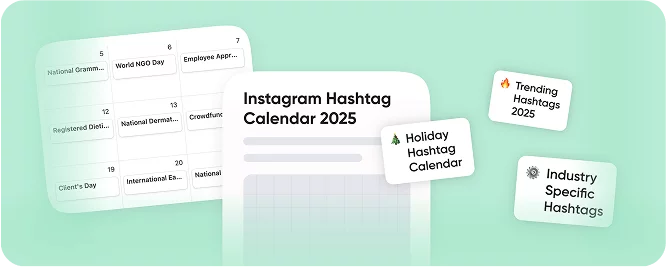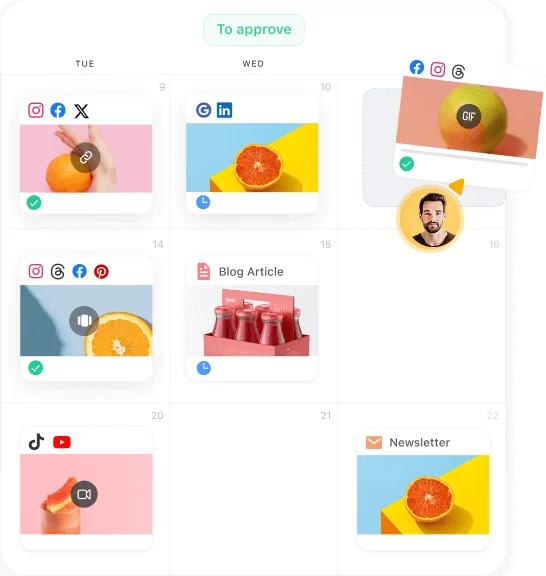Haven’t you heard the latest rumor yet? Nearly all social media marketers chatter these days that commenting will outshine posting as a growth strategy. But actually, this is not someone’s fantasy or baseless gossip spread across the digital space. As we approach a...
Why campaigns are anxiety-inducing and how to manage that

Campaigns are one of the most anxiety-inducing parts of a marketer’s work life. You’ve got fixed deadlines, you’re under ROI pressure… and everyone in the company is watching.
Listen to an in-depth webinar where we explore the core reasons that make campaign management anxiety-inducing.
In partnership with our friends at Immaginy, we go through real-life case studies to show you the way toward confident campaign leadership. And calmer days, even when the launch day is approaching.

Get the webinar recording
Meet the speakers
Eddy Harb – Co-founder & CEO, Immaginy (don’t share Linkedin, Instagram)
With a career that bridges architecture, UX design, and his current role managing several products at PwC, he dedicates himself to solving customer needs and helping businesses achieve their goals.
Elie El Khoury – Co-founder & Chief Innovation Officer, Immaginy (Linkedin, Instagram)
Recognized by Forbes as a 30 under 30 honoree, his background in architecture and PR has always fueled his passion for design, communication, and innovation. His work with global brands has taught him the importance of crafting experiences that resonate on a deep level.
Rudy Wehbe – Co-founder & Chief Creative Officer, Immaginy (Linkedin, Instagram)
As a medical doctor turned entrepreneur and a Forbes 30 under 30 honoree, Rudy has always been driven by a desire to solve problems creatively—whether in healthcare, communication or design.
Monica Obogeanu – Senior Product Marketer, Planable
Monica leads product marketing campaigns, drives competitive intelligence initiatives, and contributes to Planable’s growth strategy through extensive user research and data analysis.
Key insights to reduce campaign anxiety and increase impact
1. The biggest campaign killer? Unclear ownership
Campaigns stall not because of laziness but because no one knows who’s doing what. One of the core themes from the webinar was the chaos that results when responsibilities aren’t explicitly assigned. A real-life example from a SaaS company showed how simple shifts—defining owners for each deliverable, using agile sprints, and running weekly stand-ups—reduced missed deadlines by 50%. Clear roles and structured check-ins didn’t just speed up work—they also lowered stress and improved team morale.
2. Too many tools are making things worse
The promise of productivity tools is efficiency, but the reality for many marketers is fragmented workflows. Teams toggle between Slack, email, spreadsheets, Notion, ClickUp, and more—just to manage one campaign. This tool sprawl creates confusion, delays, and duplicate work. The speakers emphasized the value of centralizing campaign planning, feedback, and approvals in a single source of truth. One team that adopted this approach cut approval cycles from seven days to two, gaining back precious time before launch.
3. Campaigns don’t need more budget—just smarter strategy
One fashion brand faced a familiar challenge: they needed major impact with minimal budget. Instead of chasing big-name influencers, they pivoted to micro-creators with smaller, but more engaged followings. They also reused assets across email, social, and ads to stretch every dollar. The result? 30% lower production costs and twice the engagement. The lesson: great campaigns come from creativity and systems, not always cash.
4. Nothing slows a campaign down like approvals do
Whether it’s legal, leadership, or client sign-off, approval delays are a universal campaign pain point. A Black Friday campaign almost failed due to disconnected teams and endless feedback loops. By running a discovery workshop, introducing a shared campaign roadmap, and centralizing feedback, the team cut approval delays by 40%. Aligning early and streamlining sign-off can make the difference between calm execution and last-minute panic.
5. You can’t scale campaigns without structure
Campaigns today are multichannel, fast-paced, and high-stakes. Yet many teams still rely on scattered docs and spreadsheet timelines. One tip that resonated across the session: treat campaigns like products. Use repeatable playbooks, shared dashboards, and integrated asset libraries. When everyone can see the full picture—what’s been done, what’s pending, and who’s responsible—campaigns stop feeling like a scramble and start feeling like a system.
6. Change is hard, so start small
Even the best processes fail without buy-in. Whether it’s adopting a new tool or introducing more structure, change meets resistance. The experts recommended starting with a test project or pilot group, showing early wins, and involving the team in the process. When people see the benefits for themselves—fewer headaches, faster results—they’re more likely to embrace new ways of working.
Want to watch the full session?
Leave your email below to get access to the full webinar recording. You’ll see detailed breakdowns of each use case, practical frameworks, and the exact tools these teams used to turn campaign anxiety into organized execution.




